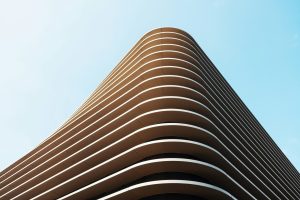Neuroplastic Architecture: Residential Spaces That Reshape Human Potential
Imagine walking into a home and feeling an immediate sense of peace and clarity. The space is designed to stimulate your mind and enhance your well-being. From the lighting to the layout, every aspect of this residential space is carefully crafted to reshape human potential. This is the power of neuroplastic architecture. It goes beyond the traditional concept of design and creates spaces that promote neuroplasticity – the ability of the brain to change and adapt. In this article, we will dive into the intricacies of neuroplastic architecture and its impact on residential spaces.
The Science Behind Neuroplasticity
Before we can fully understand the concept of neuroplastic architecture, we must first understand the science behind it. Neuroplasticity, also known as brain plasticity, refers to the brain’s ability to reorganize itself by forming new neural connections throughout life. This is made possible by the brain’s ability to create new neurons and modify existing connections.
Neuroplasticity is crucial in our development and plays a significant role in our learning, memory, and behavior. Our experiences, thoughts, and environment all contribute to the development of our brain’s neural connections. This is where neuroplastic architecture comes into play.
The Role of Neuroplastic Architecture
Neuroplastic architecture is a relatively new concept that combines the fields of neuroscience and architecture. It explores how the design of our built environment can impact our brain’s ability to change and adapt. By understanding the science of neuroplasticity, architects and designers can create spaces that promote positive changes in our brain.
Residential spaces designed with neuroplastic architecture in mind can enhance our cognitive abilities, emotional well-being, and overall quality of life. From the color scheme to the materials used, every element of the space is carefully chosen to maximize its impact on the brain. Let’s take a closer look at some key elements of neuroplastic architecture.
Lighting
The lighting in our homes can have a significant impact on our brain’s plasticity. Natural light, in particular, has been found to stimulate the production of dopamine and serotonin, two key neurotransmitters responsible for regulating our mood and emotions. This is why homes designed with large windows and skylights that allow ample natural light are considered to have neuroplastic elements.
On the other hand, harsh artificial lighting can have a detrimental effect on our brain and disrupt our body’s natural circadian rhythm. This can lead to poor sleep patterns, mood swings, and other health issues. Therefore, neuroplastic architecture emphasizes the use of natural light as much as possible.
Layout and Flow
The layout and flow of a residential space can also impact our brain’s plasticity. Spaces that promote movement, such as open-concept layouts, encourage physical activity, and can even improve our memory and cognition. On the other hand, cluttered and cramped spaces can create a sense of stress and restrict our movement, hindering our brain’s ability to form new connections.
Neuroplastic architecture emphasizes the need for well-designed spaces that promote movement and flexibility. This not only enhances our brain’s plasticity but also improves our overall physical health.
The Benefits of Neuroplastic Architecture in Residential Spaces
Neuroplastic architecture has a wide range of benefits for residential spaces. Here are some of the key advantages:
Enhances Learning and Creativity
The brain’s plasticity is at its peak during childhood and decreases as we age. However, neuroplastic architecture can help maintain and enhance our brain’s ability to change and adapt. A well-designed residential space can stimulate our brain to form new connections, which can lead to improved learning and creativity regardless of our age.
Promotes Emotional Well-being
Our environment has a significant impact on our emotions and mental health. Neuroplastic architecture can help create a calming and nurturing environment that promotes emotional well-being. This can be achieved through the use of natural elements, such as plants, and the incorporation of soothing colors and materials.
Improves Physical Health
The design of our homes can also impact our physical health. By promoting natural movement and flexibility, neuroplastic architecture can help prevent issues like joint pain and stiffness. Additionally, the use of natural light and materials can contribute to better indoor air quality, improving our overall health.
Creating Residential Spaces That Reshape Human Potential
The concept of neuroplastic architecture is still in its early stages, but its potential is undeniable. By combining the fields of neuroscience and architecture, we can create residential spaces that positively impact our brain’s ability to change and adapt. With proper research and implementation, we can unlock the full potential of neuroplastic architecture and revolutionize the way we design our homes.
In conclusion, neuroplastic architecture is a powerful tool that can reshape human potential through the design of our residential spaces. By understanding the science behind it and incorporating its elements into our homes, we can create spaces that not only look beautiful but also enhance our cognitive abilities, emotional well-being, and physical health. So, the next time you walk into a space that makes you feel calm and inspired, remember the power of neuroplastic architecture.











